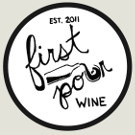Sangiovese is most commonly associated with Italy, and for good reason. This varietal is responsible for Chianti, brunello di Montalcino, and when blended with cabernet sauvignon, many ‘Super Tuscans’. Sangiovese is particularly notable due to it’s tendency to have clones of itself, with subtle variations, depending on growing location and numerous other factors. In a sense of both structure and clones, sangiovese is closer to pinot noir than cabernet sauvignon, however, it is much less difficult to grow. Recently, California, and a handful of other locations have also begun to produce sangiovese.
Due to this variation, sangiovese can produce everything from very anemic and watery reds to rich, robust, structured earthy wines. It primarily has moderate yet firm tannins, and moderate to high acidity. While young, sangiovese can evoke many memories of cherries, and some times light floral notes. As it ages it gets some what earthy, demonstrating tea, dried tobacco, and chocolate flavors.
Color: Red
Style: Primarily dry, oaked.
Notable Growing Locations: Italy: Tuscany / Umbria
